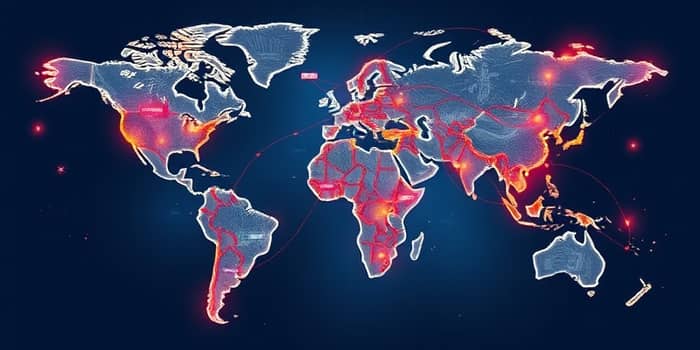
In a world still healing from unprecedented shocks, the intricate networks that once prized pure efficiency are being reimagined. Manufacturers everywhere are waking up to the reality that potential points of vulnerability lurk in every corner of their supply networks. As the next chapter unfolds, resilience has become the guiding star ensuring stability and continuity in manufacturing.
Over the past four decades, global supply chains have revolutionized international trade. By seamlessly connecting suppliers, logistics partners, and factories across continents, companies unlocked lower production costs and offered consumers an unparalleled variety of goods. Yet, this relentless drive for efficiency came at a price.
The COVID-19 pandemic served as a stark inflection point, revealing that these sprawling networks could quickly become points of concentrated risk. Factory shutdowns, port backlogs, and labor shortages combined to expose how a single disruption could echo around the globe in a matter of days. The question shifted from “How cheap can we make it?” to “How can we ensure unbroken continuity?”
Between 2024 and 2025, manufacturers must navigate a complex risk landscape. Persistent inflation pressures raw material costs upward. Geopolitical tensions threaten cross-border trade flows. Transportation bottlenecks, though eased from their pandemic peaks, remain a critical challenge. Even as pandemic-related risks decline—from 23% in 2023 to just 13% in 2025—new vulnerabilities take center stage.
Consider the stark reality facing European shippers: over 76% reported significant disruptions in 2024 alone. With consumer demand shifting unpredictably and regulatory changes looming, companies must stay agile or risk falling behind.
These numbers tell a powerful story: manufacturing growth is modest and uneven, yet investment in digital resilience tools is surging. Companies without a clear plan risk being sidelined.
Resilience in 2025 hinges on forging a constellation of collaborative partnerships. No single firm can secure its entire chain in isolation. Instead, manufacturers, suppliers, logistics providers, and technology innovators must align around shared goals, data standards, and contingency plans.
By embracing these practices, organizations can adapt on the fly when geopolitical events or natural disasters strike, ensuring production lines keep running.
Digital transformation is no longer optional—it is the very foundation of a robust supply chain. Advances in AI, analytics, and automation give planners unprecedented visibility and predictive power. From forecasting raw material shortages to rerouting shipments around blocked ports, technology empowers teams to stay one step ahead of disruption.
Firms that harness these tools can transform reactive firefighting into proactive strategy, preserving both margins and reputations.
The old dichotomy—efficiency versus resilience—has given way to integrated thinking. Leading manufacturers now embed integrated resilience and efficiency strategies into every decision, from facility location to workforce training. They leverage automation to streamline operations while maintaining agile contingencies for critical materials.
In practice, this might look like a distribution center that uses robotics for low-value tasks but keeps skilled teams on standby to handle unexpected order surges or rerouting needs. It might mean negotiating flexible contracts with carriers that allow capacity adjustments during crises. The result is a supply chain that can scale up or pivot at a moment’s notice without unnecessary cost overruns.
Not all industries face disruptions equally. High-tech and electronics sectors often lead the charge in resilience, thanks to advanced planning systems and nimble production methods. When a key semiconductor plant in Asia shut down briefly in late 2024, companies using digital twins and real-time monitoring reallocated orders to other facilities within 48 hours, avoiding major revenue losses.
By contrast, legacy manufacturing and construction-related sectors, which rely heavily on commodity inputs and traditional supply models, still struggle with lead times and volatile pricing. Their journey toward resilience underscores the need for targeted investments in both technology and cross-industry collaboration.
Looking beyond 2025, the survivors will be those that continue refining their resilience playbooks. Key capabilities will include advanced risk simulation, integrated sustainability metrics, and a workforce skilled in both digital tools and crisis management. Embracing predictive analytics and real-time monitoring will become standard practice, not cutting-edge differentiators.
The path ahead demands a cultural shift: celebrating not only cost savings but also the ability to withstand shocks without losing momentum. By fostering a mindset of continuous learning and adaptation, organizations can turn every disruption into an opportunity for growth.
Global supply chains are the arteries of modern economies. Injecting resilience into these vital networks is a moral and strategic imperative. Manufacturers that lead with foresight, collaboration, and technological innovation will not only protect their bottom line but also ensure stability for communities and consumers worldwide. The era of agility and resilience is here—embrace it, and transform uncertainty into unwavering strength.
References













